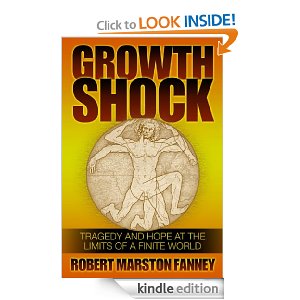As we stand in the grips of one major global crisis, one whose first wave of mass casualties may finally be starting a merciful down-slope (on April 27, 2020), it’s important not to lose sight of the other, larger, one. Yes, I’m talking about the Climate Crisis. And as I mention it, I would be remiss to fail to note that one is not like the other. In particular, the climate crisis is much worse when measured over longer time scales and taken in total.
In an April 21 address ahead of Earth Day, U.N. Secretary-General António Guterres stated:
“Currently, all eyes are on the COVID-19 pandemic, the biggest test the world has faced since the Second World War. We must work together to save lives, ease suffering, lessen the shattering economic and social consequences, and bring the disease under control. But, at the same time, let us not lose focus on climate change. The social and economic devastation caused by climate disruption will be many times greater than the current pandemic.”
The reason is that the climate crisis is on a path of escalating damage and danger so long as we continue burning fossil fuels. One that does not relent if the carbon emission itself does not permanently abate. One that in the broader sense is capable of spinning off multiple sub-crises or harmfully amplifying and influencing others. Or in a sense that is in a micro-way more specific to the present pandemic, as we touched on early in this web-book, climate crisis can help to worsen and spread new infectious diseases.
COVID-19, Air Pollution, Deforestation, Warm Weather Illnesses, and Health Systems Impacted by the Climate Crisis
In the context of the present COVID-19 pandemic, the climate crisis, and its driver (fossil fuel based pollution), produces a number of harmful infectious illness interactions that are worth pointing out. Namely, the air pollution that drives the climate crisis can increase the death rate from COVID-19, the deforestation that also helps to drive the climate crisis can serve as a driver for the emergence of new coronavirus based illnesses like COVID-19, that COVID-19, like Ebola is a novel infectious illness from a typically warmer weather region, and that the climate crisis has deleterious impacts on the global health system that challenges our ability to manage such a wide-ranging pandemic outbreak. As we’ll glimpse below, COVID-19’s interaction with climate change denial and its related anti-science bent, has also been particularly harmful.
Second Hottest January through March on Record for 2020
A larger update for the climate crisis, however, takes in a couple of basic data points that show we are still on a very damaging and destructive climate pathway. One that the COVID-19 based economic slowdown and related temporary reductions of emissions by itself cannot halt (more on this later). A path we won’t effectively depart from unless we exit the COVID-19 pandemic by enabling a rapid transition to clean energy and a related follow-on effort to draw down excess atmospheric carbon.

First quarter of 2020 was the second hottest on record according to NASA GISS. Image source: NASA.
The first key climate crisis data point we’ll explore in this installment is provided by the climate experts at NASA GISS, headed by Dr Gavin Schmidt. And it comes in the form of a global surface temperature analysis for the first quarter of 2020. For, according to NASA, during the months of January through March of 2020 global surface temperatures averaged about 1.19 degrees Celsius above 20th Century baseline measures. This is about a 1.41 degree Celsius departure above 1880s averages. Quite a bit higher than the past five year baseline at 1.15 C hotter than 1880s averages and just 0.06 C below the record hot first quarter of 2016. It is also disturbingly close to the IPCC identified first climate threshold mark at 1.5 C. A threshold which we are probably still about a decade and a half away from breaching over a five year average time-frame along the present fossil fuel burning pathway. But it’s still not fun seeing us so close to it at present.
With such an opener, 2020 may not become a new record hot year. Somewhat less likely given no El Nino is expected, but possible. And if it does, it would spell more trouble. We’ll wait for confirmation on the 2020 temperature trend coming from NASA GISS and Dr Gavin Schmidt — who has dutifully provided publicly helpful annual temperature path projections during recent years. Regardless, 2020 will likely come uncomfortably close to another record hot year. And such continuing severe global heat is certainly within a well-established trend of longer-term heating.
Atmosphere Still Filling up with Carbon
Of course the primary driver of climate crisis is fossil fuel burning and related emissions of greenhouse gasses into the Earth’s atmosphere. Emissions that have temporarily slowed down — possibly by as much as 5-10 percent for 2020 according to this report by Carbon Brief — but have not halted. And emissions would have to slow down by a lot more and for a lot longer to start having a positive impact on the Earth’s climate system.
According to Glen Peters, research director at CICERO: “Even if there is a slight decrease in global fossil CO₂ emissions in 2020, the atmospheric concentration of CO₂ will continue to rise. The atmosphere is like a (leaky) bathtub, unless you turn the tap off, the bath will keep filling up with CO₂.” A statement of basic facts that climate change deniers who attack science are even now trying to confuse (see this scientist’s statement to clarify).
Not only are top voices at CICERO chiming in on the issue of climate crisis and a COVID-19 related temporary economic slow-down. But recently the World Meteorological Organization issued its own statement on the matter noting — the economic and industrial downturn as a result of the Coronavirus pandemic is not a substitute for concerted and coordinated climate action.
Climate Science Deniers Continue to Publicly Demonstrate a Dangerous Incompetence on COVID-19
We could give flight to reason and join in the ranks of science deniers who ignore and refute experts at places like CICERO and the World Meteorological Organization. Basically the same set of people who downplay or attack the advice of experts (like those at the World Health Organization) and ignore facts at our own and everyone else’s peril (but we won’t). We could listen to people like the current occupant of the White House (but we don’t). A known climate science denier who’s also spent months attacking public health experts and defunding key disease fighting groups while also peddling questionable COVID-19 treatments like hydroxychloroquine of unproved, potentially harmful, effectiveness. Who on Thursday, April 23rd appeared to publicly suggest injecting disinfectants (like Windex and Bleach) into our bodies as a valid way to fight COVID-19 infection (Do not do this! It can kill you!).
Trump later walked his ridiculous and dangerous statements back, while blaming his usual scape-goat — the free press — for his own brazen incompetence. But his most recent fact-free and literally dangerous circus show again put public health at risk with the potential to drive some of those who take his statements verbatim to inflict harm upon themselves. It also precipitated public health advisories from officials and the makers of Bleach and Windex advising people to, well, not take the President’s apparent advice. We could put ourselves at further risk by listening to his quackery-defending supporters, now lifting up a familiar gas-lighter chorus to try to tell us what we all saw happen didn’t, and related cohorts. But this form of self-harm follower-ship, or of even entertaining it, is proving to be a very, very bad idea. For the tendency here to deny the science on one threat — COVID-19, that those clinging to a certain political ideology are incapable of managing responsibly — is apparently related to their inability to perceive the larger threat of climate crisis.
CO2 Strikes Above 416 Parts Per Million During April of 2020
So instead we will just do the smart, rational thing and listen to the actual experts (I know many of us already do, but unfortunately and increasingly obviously some still do not) — world-class scientists who have spent their lives researching the Earth’s climate system. Scientists like Dr Michael E Mann, Dr Katherine Hayhoe, Dr Terry Hughes, Dr Stefan Rahmstorf, Dr Peter Gleick, Dr Gavin Schmidt, Dr Eric Rignot and so many more. And the atmospheric greenhouse gas indicators for the climate crisis that these scientists follow are still heading in the wrong direction. Still building up. Still providing more heat trapping capacity for the Earth’s atmosphere and larger climate system.

The seasonal carbon dioxide trend for the past two years as measured at the Mauna Loa Observatory shows continuing increases driven by fossil fuel burning. Image source: The Keeling Curve.
At this time, atmospheric CO2 is hitting above a 416 parts per million average on a weekly basis. This is well above anything seen in at least the last 2.6 to 5.3 million years and likely since the Middle Miocene 15-17 million years ago. According to the real experts at NOAA, this greenhouse gas is the primary driver of the present Earth System heating we now observe (see the Earth Systems Research Lab’s Greenhouse Gas Index Page).
So both heat and its big driver CO2 are still heading in the wrong direction. And, no, the fossil fuel burning tap into the tub didn’t stop running, it just turned down a bit. Hopefully permanently — but that will depend on what kind of economic stimulus we provide to help get us out of this crisis. Particularly for what kinds of energy systems we decide to stimulate to help get the global economy back up and running (clean energy to help stop the climate crisis and business as usual fossil fuel burning to keep making it worse) when the COVID-19 pandemic ultimately abates.
Up next: Social Distancing and Waiting Until It’s Safe Enough to Re-Open


















































